Summer Reading List (Page 3)
In Kipligat's Chance, a novel by David Odhiambo, BA'89, 16-year-old John "Leeds" Kipligat is literally running for his life. He's not being chased by anyone, but the teen has a keen sense that his only ticket out of a dead-end future is to firmly establish himself as a track speedster with the kind of potential that will appeal to college recruiters and Olympic team officials.
It's a quest that also drives his best friend, Kulvinder, and it's not the only thing the two gifted runners share. Now residing in Vancouver, the pair first became friends as children in Kenya. In a series of haunting flashbacks, Odhiambo gradually reveals just how much their respective families lost before they fled their homeland for Canada.
Odhiambo has a deft touch for characterization -- you tend to empathize with his creations even when they're clearly doing things they shouldn't. John stands out in particular -- he's a sweet-natured romantic one minute, an embittered bundle of confusion the next. John and Kulvinder's coach is another memorable figure. A potbellied smoker with detailed insights into the exploits of his sport's great figures, Sam spews corny clichés aplenty, but is sage enough to toughen up his charges in anticipation of the challenges that lie ahead of them. Those challenges aren't restricted to the track. Along the way, John deals with a romance with an unlikely classmate and its quick, brutal end, his parents' struggle to make a life for themselves in Canada, his complex love/hate relationship with Kulvinder, and the sorrow that hangs over him concerning the fate of his revered older brother, Koech.
While Odhiambo moves the story along, his prose offers plenty of sweet flourishes that don't clutter up the works. Running in Kenyan fields, John remembers feeling like "a kite pulled into the blue sky." It's refreshing as well to encounter a couple of jocks who are as articulate as John and Kulvinder. The pair even take a certain delight in their use of wordplay on occasion -- Kulvinder to the point of pomposity.
John's key challenge is to endure -- on the track and off. Reading Kipligat's Chance requires no endurance whatsoever. Chances are you'll find it's a hard book to put down.
Kipligat's Chance, Penguin Books, by David Odhiambo.
What's your definition of boring TV? Mark Starowicz, BA'68, DLitt'01, can guess how you might have answered a few years ago. "The three deadliest words in television: 'Canada,' 'history,' and 'documentary.'" Starowicz spent one of the most difficult periods of his professional life dedicated to changing that mindset.
The mastermind behind CBC TV's monumental 32-hour documentary series, Canada: A People's History, Starowicz and his team crafted the show to firmly rebut any notion that Canadian history is boring. As a Globe and Mail review noted, "It is as thrilling as it is earnest. The battles are dramatically re-enacted, the ships are satisfyingly ka-boomed, the scripts are compelling."
The tale behind the epic TV series is told in Starowicz's new book, Making History. It was quite a struggle, and Starowicz is probably the only man who could have made it happen. Thanks to a string of major successes -- the revamping of CBC Radio's As It Happens, the creation of CBC TV's The Journal, the production of Dawn of the Eye, an Emmy Award-winning history of newsreels and TV news -- Starowicz had clout with the CBC suits and a loyal following among broadcast journalists.
Even so, he readily admits the project danced with disaster on occasion. While Making History features plenty of interesting anecdotes about filming the series -- in particular, a misadventure in which Starowicz and one of his daughters are trapped aboard a sinking ship off the coast of Newfoundland -- the real drama took place in the network's boardrooms. CBC president Perrin Beatty was at war with Guylaine Saucier, chair of the board of directors. That friction, combined with budget-cut bloodletting, resulted in CBC executives not wanting to stick their necks out for Starowicz's multimillion-dollar project.
In Quebec, meanwhile, Radio-Canada's decision-makers were unmoved by the fact that Canada: A People's History was a pioneering co-production that would air in both English and French. They did little to promote the project which some viewed as federalist propaganda.
In the end, Starowicz and his team pull it off. Before the first episode airs, Starowicz yearns for 400,000 Canadians to tune in. Instead, 2.9 million in English Canada alone watch, making the series an instant sensation.
"The myth that Canadians are not interested in their history is dead," Starowicz crows. "If it ever was true, which I doubt, it is now statistically, demonstrably and irrevocably dead."
Making History, McClelland and Stewart, by Mark Starowicz.
Breaking Free: The Story of William KurelekTundra Books, by May Ebbit Cutler, BA'45, MA'51 |
A Telling of StarsPenguin Books, by Caitlin Sweet, BA'93 |
Own Your HealthHCI, by Roanne Weisman, BSW'74, and Brian Berman, MD |
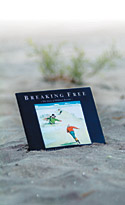 William Kurelek was described by the New York Times as the "North American Breughel." The Alberta-born, Manitoba-raised artist's paintings from everyday life and his prairie background certainly have that capacity for capturing an entire culture and lifestyle in single, sweeping images. May Cutler -- who as founder of Tundra Books published nine of Kurelek's prize-winning books for children like A Prairie Boy's Winter -- tells the story of the painter, from his unhappy childhood to his success and fame as an artist, to his early death from cancer. Cutler was not only his publisher but his friend and uses Kurelek's own narrative style to tell his story for children. Breaking Free is beautifully illustrated with paintings from Kurelek's books. What Next? The Complete Guide to Taking Control of Your Working LifeDK Publishing, by Barbara Moses, BA'71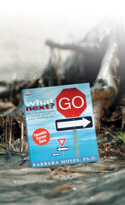 For anyone on involuntary vacation due to unemployment, or tempted to run screaming from their present job, Barbara Moses may have some answers. Moses, president of a human resources consulting company and author of several books on career management, has produced an attractive, workbook-style guide to researching, applying for and landing "great work." For new jobseekers, it's full of pertinent information about interview techniques, cover letters and mentors. For older people, it's a reminder that things have changed. Loyalty and long service, once valued in employees, may now be viewed as passive attributes. Employers want evidence of adaptability and may be wary of the curmudgeon factor when considering a mature applicant. The book's phony-earnest stock photos grate, but the range and quality of the content make that a minor niggle. |
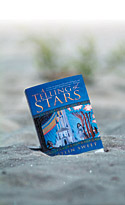 This is a fantasy novel in the tradition of Ursula K. LeGuin. In young Jaele, first-time novelist Caitlin Sweet has created a passionate heroine seeking revenge on a gang of Sea Raiders who murdered her family. Her coming-of-age quest takes her to magical and strange lands inhabited by equally fantastical creatures who help her along the way. The quest parallels the stories of Queen Galha her father used to recount to her. Fans of poetical fantasy will recognize and love the genre. The Options StrategistMcGraw Hill, by Marc Allaire, MBA'82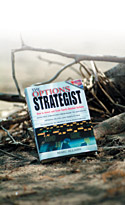 If you don't know a put from a pork belly, The Options Strategist is probably not for you. But if you're an investor who gets giddy at the mention of naked calls, spreads and strangles, then Marc Allaire can take you to the next level. According to the author, options investing can be both profitable and easy. (An option is the right to buy or sell a security at a set price until a fixed date.) Learn how to do it right and you can protect your pile from market declines and price swings. Allaire works up from basic strategies to more advanced manoeuvres, where we encounter combos, long straddles, half-collars and narrow butterflies. An idea for Allaire's next book might be to explain the origins of all this fascinating language. The Best Book of BikesMaple Tree Press, by Amy Pinchuk, BEng'83, MEng'85, PhD'88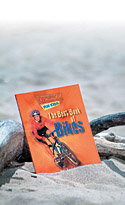 The Popular Mechanics kids' TV series has spun off into kids' books and the latest is this guide to bikes from Amy Pinchuk. Here you get the history of bikes, their mechanics, information on biking gear, and a "grease monkey zone" that helps kids with keeping their bikes tuned up for safe riding. The book also has fun facts (China has 450 million bicycles and only 17 million cars), and it includes a section on BMX and freestyle biking for the dare-devils. |
 Own Your Health is a valuable resource for all consumers of medical services. With Dr. Brian Berman, Roanne Weisman, has put together a guide to "integrative" medicine, combining therapies from conventional and alternative medicine. After undergoing heart valve replacement, Weisman suffered a stroke from which she partially recovered. Although still quite disabled, Weisman says, "Western medicine was through with me." Seeking other treatments, she encountered patients and practitioners who inspired her to write the book. The layout is a little confusing, but the book is packed with information about how everything from cold water therapy to biofeedback can supplement conventional treatments. A persuasive and useful book for both doctor and patient. The Lafontaine Baldwin Lectures: A Dialogue in Democracy in CanadaPenguin Books, John Ralson Saul, BA'69, DLitt'97, Alain Dubuc, George Erasmus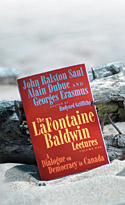 The LaFontaine Baldwin Lectures are named after two early architects of Canadian society and democracy, Louis-Hippolyte LaFontaine and Robert Baldwin. "Discovering what is unique in the Canadian democratic experience and re-imagining a common democratic future for Canada are the twin goals" of the series, writes Rudyard Griffiths in the book's introduction. One lecture features Saul applying LaFontaine and Baldwin's idea of responsible government to the Canadian situation today, bogged down as it is in ineffective managerial approaches. Dubuc discusses Canadian nationalism as a surprisingly close cousin of Quebec nationalism. And George Erasmus takes on Aboriginal issues and communicating them to the rest of the country. A must-read for policy wonks, political junkies and those interested in the future of Canada. |


